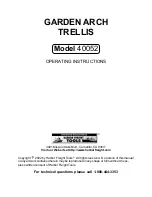
11
EN
KSL-H by KEELER
The tonometer will slip easily onto the support plate; stability is assured by the locking
pins.
3. To obtain an image as clear and as free of reflexes as possible, the angle between the
illumination and the microscope should be about 60° and the slit diaphragm should be
fully opened.
4. When not in use the tonometer should be removed from the Slit Lamp and placed
securely back in the packaging or a suitable location.
Applanation Tonometer ‘Keeler Fixed’ (R-TYPE)
This instrument is for those who wish the tonometer to remain permanently on the slit lamp.
5. Mount the plate for the tonometer onto the microscope body using the securing screw.
6. Mount the tonometer mount onto the mounting post.
7. Swing the tonometer forward in front of the microscope for examination. A notch
position ensures exact centering of the prism with the left objective.
8. To obtain an image as clear and as free of reflexes as possible, the angle between the
illumination and the microscope should be about 60° and the slit diaphragm should be
fully opened.
9. When not in use the instrument is swung around and secured in a notch position to the
right of the microscope.
6. INSTRUCTIONS FOR USE
6.1 SETTING THE BINOCULARS
It is vital that the binoculars are optimised for the user’s optical
correction in order to obtain focused binocular images.
1. Remove the Test Bar locating hole cover plate (19) and place the test bar focus in the test
bar location hole at the base of the microscope arm. To access the location hole first remove
the cover. The test bar should be set with the flat projection face towards the Slit Lamp
Microscope. The illumination and the microscope should be in the zero degrees position.
2. Turn on the Slit Lamp and set the slit to full width (18), set the magnification to x16 (31).
Right eye
Left eye
Summary of Contents for KSL-H
Page 1: ...SLIT LAMP INSTRUCTIONS FOR USE H Series A world without vision loss ...
Page 2: ......
Page 25: ......












































